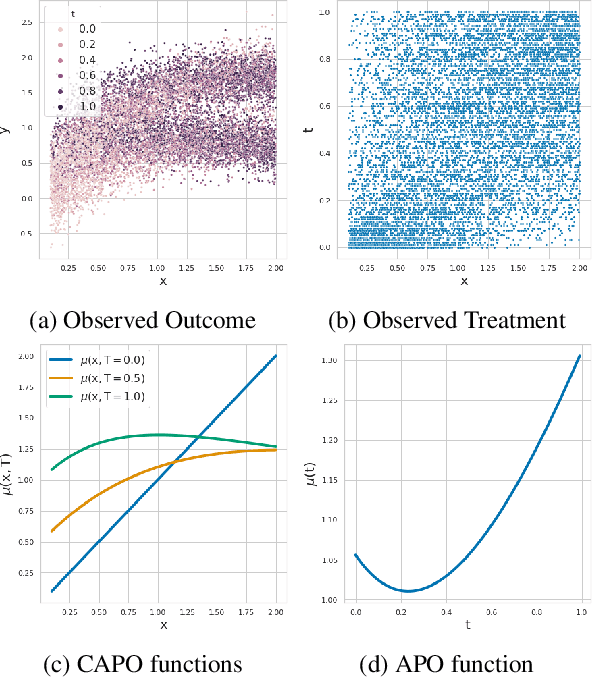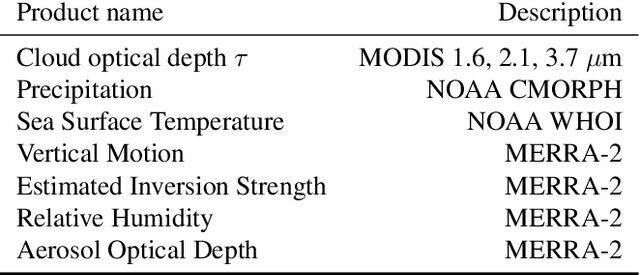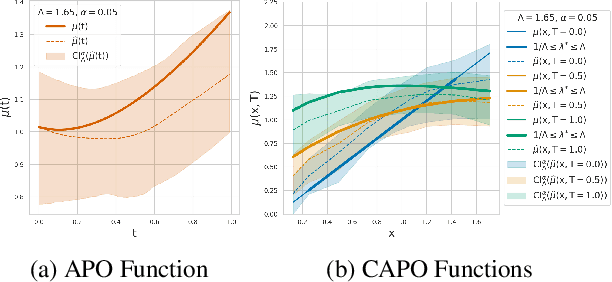Alyson Douglas
Scalable Sensitivity and Uncertainty Analysis for Causal-Effect Estimates of Continuous-Valued Interventions
Apr 26, 2022



Abstract:Estimating the effects of continuous-valued interventions from observational data is critically important in fields such as climate science, healthcare, and economics. Recent work focuses on designing neural-network architectures and regularization functions to allow for scalable estimation of average and individual-level dose response curves from high-dimensional, large-sample data. Such methodologies assume ignorability (all confounding variables are observed) and positivity (all levels of treatment can be observed for every unit described by a given covariate value), which are especially challenged in the continuous treatment regime. Developing scalable sensitivity and uncertainty analyses that allow us to understand the ignorance induced in our estimates when these assumptions are relaxed receives less attention. Here, we develop a continuous treatment-effect marginal sensitivity model (CMSM) and derive bounds that agree with both the observed data and a researcher-defined level of hidden confounding. We introduce a scalable algorithm to derive the bounds and uncertainty-aware deep models to efficiently estimate these bounds for high-dimensional, large-sample observational data. We validate our methods using both synthetic and real-world experiments. For the latter, we work in concert with climate scientists interested in evaluating the climatological impacts of human emissions on cloud properties using satellite observations from the past 15 years: a finite-data problem known to be complicated by the presence of a multitude of unobserved confounders.
Using Non-Linear Causal Models to Study Aerosol-Cloud Interactions in the Southeast Pacific
Nov 03, 2021



Abstract:Aerosol-cloud interactions include a myriad of effects that all begin when aerosol enters a cloud and acts as cloud condensation nuclei (CCN). An increase in CCN results in a decrease in the mean cloud droplet size (r$_{e}$). The smaller droplet size leads to brighter, more expansive, and longer lasting clouds that reflect more incoming sunlight, thus cooling the earth. Globally, aerosol-cloud interactions cool the Earth, however the strength of the effect is heterogeneous over different meteorological regimes. Understanding how aerosol-cloud interactions evolve as a function of the local environment can help us better understand sources of error in our Earth system models, which currently fail to reproduce the observed relationships. In this work we use recent non-linear, causal machine learning methods to study the heterogeneous effects of aerosols on cloud droplet radius.
Cumulo: A Dataset for Learning Cloud Classes
Nov 05, 2019



Abstract:One of the greatest sources of uncertainty in future climate projections comes from limitations in modelling clouds and in understanding how different cloud types interact with the climate system. A key first step in reducing this uncertainty is to accurately classify cloud types at high spatial and temporal resolution. In this paper, we introduce Cumulo, a benchmark dataset for training and evaluating global cloud classification models. It consists of one year of 1km resolution MODIS hyperspectral imagery merged with pixel-width 'tracks' of CloudSat cloud labels. Bringing these complementary datasets together is a crucial first step, enabling the Machine-Learning community to develop innovative new techniques which could greatly benefit the Climate community. To showcase Cumulo, we provide baseline performance analysis using an invertible flow generative model (IResNet), which further allows us to discover new sub-classes for a given cloud class by exploring the latent space. To compare methods, we introduce a set of evaluation criteria, to identify models that are not only accurate, but also physically-realistic.
 Add to Chrome
Add to Chrome Add to Firefox
Add to Firefox Add to Edge
Add to Edge